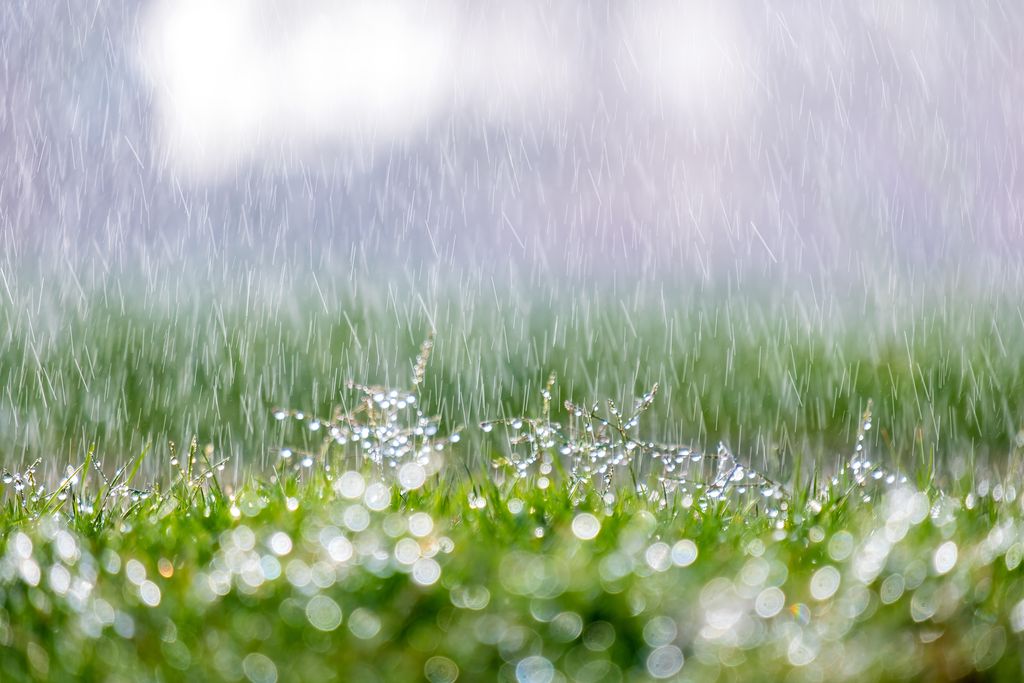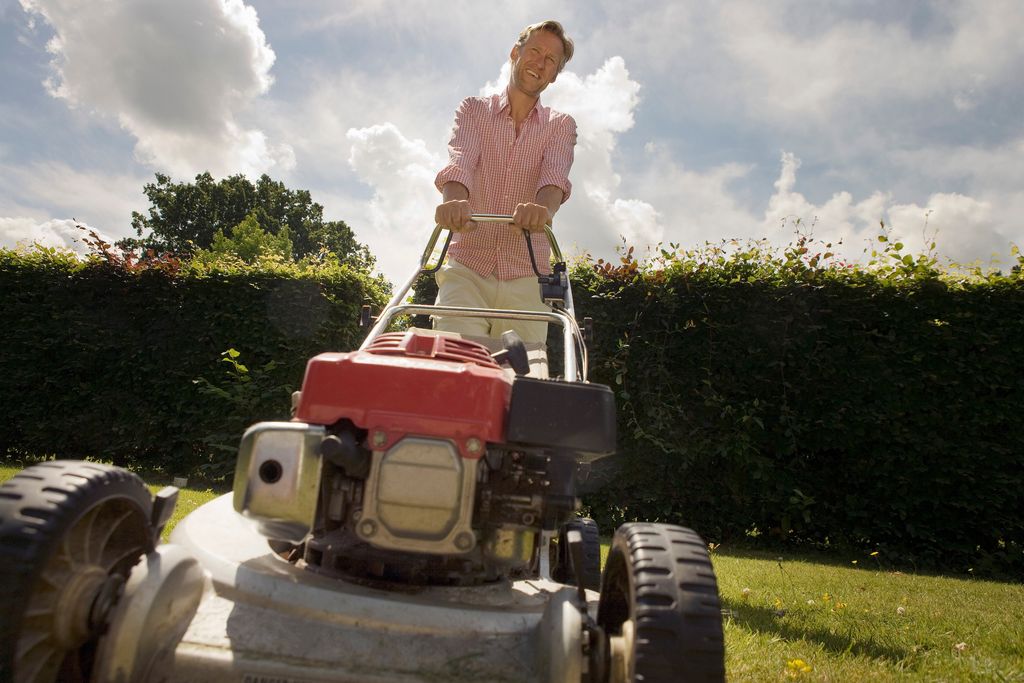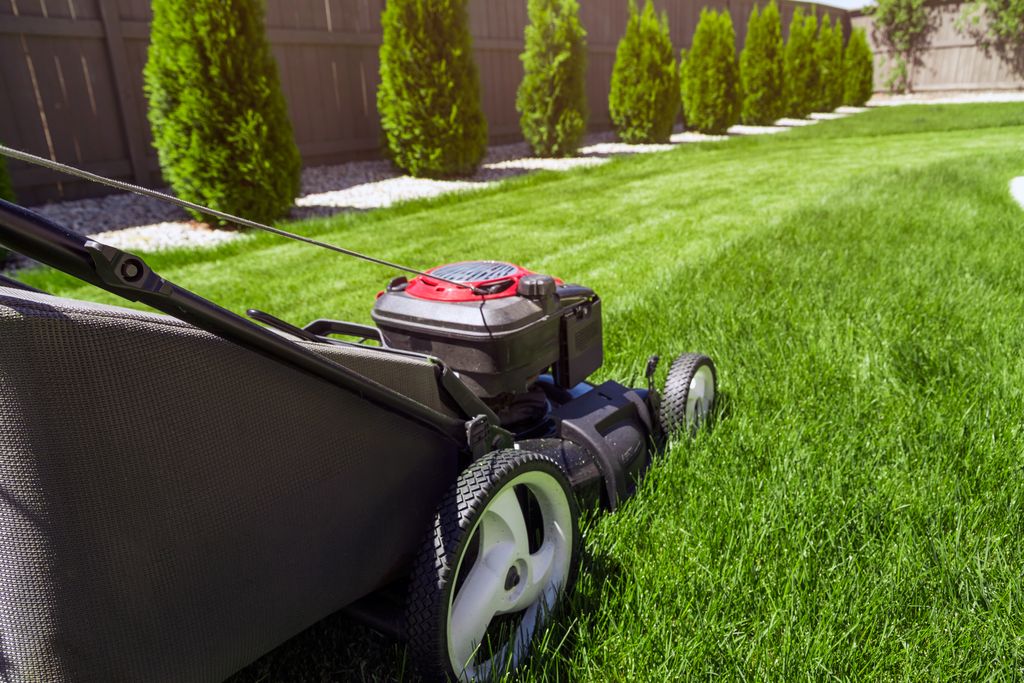- Understanding the Risks of Mowing in the Rain
- Impact of Mowing in the Rain on Grass Health
- Mowing in the Rain: The Effects on Soil Compaction
- Mowing in the Rain and Lawn Diseases
- Mowing in the Rain: The Dangers of Slipping and Injury
- The Consequences of Improper Grass Cutting Techniques During Rain
- Alternative Lawn Care Strategies When It's Raining
- Summing It Up
- F.A.Q
Last summer, I found myself in a bit of a predicament. It had been a busy week, and my lawn was starting to resemble a wild jungle. Sunday rolled around, and the weather forecast promised clear skies, but as luck would have it, those blue skies quickly turned gray. Still, determined to tackle the overgrown grass, I grabbed my mower and thought, “How bad could it be?”
The rain started lightly, but by the time I wheeled the mower out, it was pouring. At first, it felt invigorating—there’s something oddly refreshing about being outside in a gentle rain. However, as I pushed the mower through the sodden grass, I quickly realized my mistake. The mower’s wheels sunk into the mud, and I could feel the resistance as I worked harder than usual to make any progress.
As I glanced down, I noticed that the grass was getting torn instead of neatly cut. Each pass left behind clumps of wet, ragged blades, and before I knew it, the lawn was looking worse than before. With every step, I felt a sinking regret, not just for my muddy shoes but for the state of my beloved yard.
By the time I finished, the grass looked uneven and unhealthy, and I was left with a mess to clean up. That day taught me a valuable lesson about mowing in the rain. It’s not just about making my lawn look good; it’s about the health of the grass itself. The experience made me realize that sometimes, it’s better to wait for the right conditions rather than rush into it, even if it means a few extra days of wild grass. After all, a healthy lawn deserves a little patience.
This post contains affiliate links. As an Amazon Associate, I earn from qualifying purchases at no additional cost to you.
Understanding the Risks of Mowing in the Rain
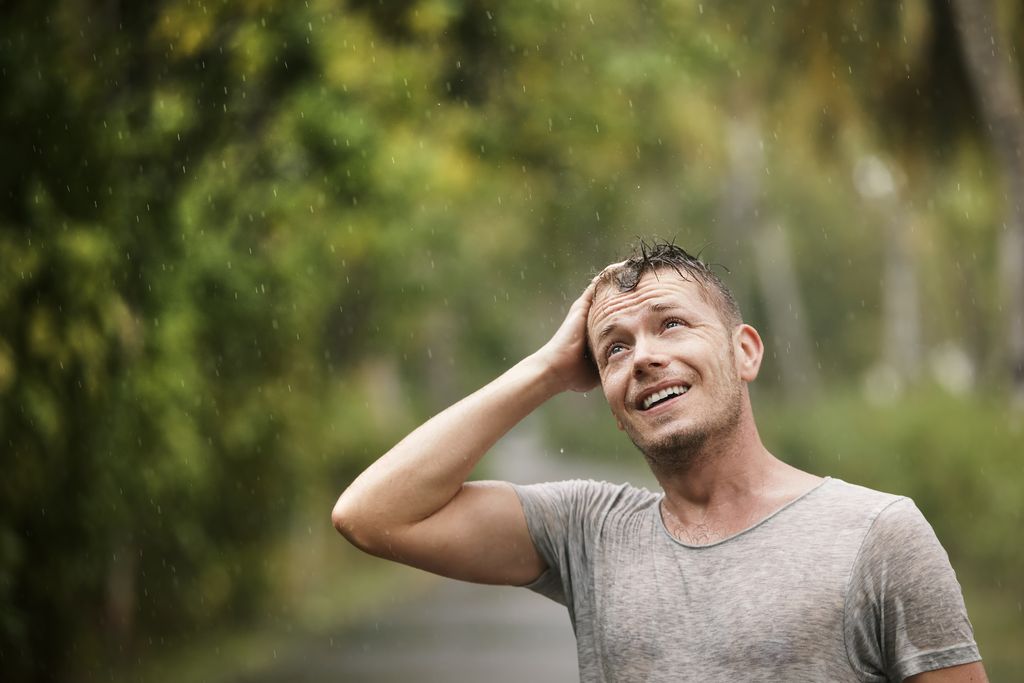
Mowing your lawn in the rain might seem like a time-saver, but it can lead to a few unexpected risks. First off, wet grass can be slippery. I remember one rainy day, I decided to mow anyway, thinking it would be quick and easy. As I pushed my mower across the damp lawn, I felt my feet slide a little. Luckily, I caught myself, but it made me realize how slippery it truly was.
Mowing in wet conditions can also lead to uneven cuts. The mower’s blades can struggle to slice through soggy grass, causing patches to look ragged. After that day, I ended up with a lawn that looked more like a patchy quilt than a smooth green carpet.
Another concern is the potential for mower damage. Water can get into the engine and other parts, leading to rust and mechanical issues. I learned this the hard way when my mower took longer to start after a few rainy mowings. A little maintenance could have saved me a headache, and possibly some cash!
Pro Tips: If you must mow in the rain, here are a few tips to consider:
- Mow only if it’s a light drizzle; avoid heavy downpours.
- Wear proper footwear with good traction to prevent slips.
- Make sure your mower is clean and well-maintained to withstand the moisture.
- Adjust your mowing height; cutting higher can help minimize the risks associated with wet grass.
Ultimately, understanding the risks of mowing in the rain can keep your lawn and equipment in top shape. It’s often better to wait for a dry day to ensure you get that perfect cut without any hiccups.
Impact of Mowing in the Rain on Grass Health
Mowing your lawn when it’s wet might seem like a good idea—especially if you’re trying to keep up with the growth. However, I’ve learned the hard way that rain can significantly affect grass health. When you mow wet grass, the moisture on the blades can lead to several issues.
How Moisture Affects Grass Blades
Mowing grass that’s soaked with rain can create torn and frayed edges on the blades. Instead of a clean cut, you end up with jagged tips, which can distress the plant. This damage makes it harder for the grass to recover, as the blades struggle to heal. I once noticed that after a rainy mowing session, my lawn looked more brown than green—definitely not the vibrant look I was going for!
Overall Lawn Vitality
Excess moisture from rain can also lead to compacted soil. When you push a mower over wet ground, you risk compressing the soil and damaging the delicate root system below. This compaction can hinder the grass’s ability to absorb nutrients and water. I remember my neighbor’s lawn, which looked lush at first but turned patchy after mowing during a downpour.
Pro Tips:
- If you must mow after rain, wait until the grass has dried out a bit. A general rule of thumb is to allow at least 30 minutes of sun.
- Consider using a mulching mower; it can help cut wet grass more evenly and return nutrients back to your lawn.
- Always check the soil moisture before mowing. If it’s muddy, give your mower a break!
By keeping these factors in mind, you’ll maintain the vitality of your lawn and enjoy a healthier, greener space.
Mowing in the Rain: The Effects on Soil Compaction
When I first started managing my lawn, I thought mowing in the rain would save me time. After all, the grass was wet, so why not? However, I quickly learned that mowing in wet conditions can lead to some serious soil compaction issues.
Understanding Soil Structure
Soil is like a sponge, made up of tiny particles that create spaces for air and water. When the ground is wet, these particles can become compacted, making it difficult for roots to grow and absorb nutrients.
Imagine a time when I decided to mow after a heavy rain. The mower wheels sank into the squishy ground, leaving deep tire tracks and a muddy mess in my yard. I noticed that not only did the grass look uneven, but the compacted soil also made it harder for new grass to sprout in those areas later on.
The Dangers of Wet Mowing
Here’s what happens when you mow in the rain:
- Soil Compaction: The weight of the mower compresses the soil, reducing the air spaces that roots need to thrive.
- Poor Water Drainage: Compacted soil can lead to pooling water, which invites pesky pests and diseases.
- Uneven Cutting: Wet grass tends to clump, leading to uneven cutting and an unsightly lawn.
Pro Tips:
- If you can, wait until the grass is dry before mowing. This simple step can save your lawn from long-term damage.
- When planning your mowing schedule, check the weather forecast to avoid those unexpected rain showers.
- If your lawn gets muddy, try to avoid walking on it too much to prevent further compaction.
By being mindful of when and how I mow, I’ve been able to keep my lawn healthy and thriving. It’s all about giving the soil and grass the best chance to flourish!
Mowing in the Rain and Lawn Diseases
When I first started caring for my lawn, I thought mowing in the rain was no big deal. After all, the grass was wet, so it would probably look nice and fresh afterward, right? Well, I quickly learned that mowing wet grass can lead to more problems than I anticipated, particularly with lawn diseases.
The Connection Between Wet Grass and Fungal Diseases
Wet grass creates an ideal environment for fungal diseases. When grass is mowed while damp, the cut blades stay wet longer, which can encourage the growth of fungi. These fungi thrive in the moisture, leading to common issues like brown patch and dollar spot. Some signs to watch for include:
- Discolored patches: Look for areas that appear yellow or brown.
- Mushy texture: If the grass feels slimy or soggy, there might be a problem.
- Fungal growth: A white or gray mold can sometimes be visible on the grass.
Pro Tips: Always check your lawn’s moisture level before mowing. If it’s overly wet, consider postponing your mowing session.
Long-Term Effects on Your Lawn
The longer you expose your lawn to these conditions, the more susceptible it becomes to diseases. In my experience, I once mowed during a light drizzle, and within a week, I noticed patches of brown creeping in. It took weeks to reverse the damage, during which I learned the importance of proper lawn care timing.
Best Practices for Mowing
To maintain a healthy lawn, here are some best practices:
- Mow when grass is dry: Aim to mow in the morning or late afternoon when the grass has dried from dew.
- Keep your blades sharp: Dull blades tear the grass, leaving it vulnerable to diseases.
- Adjust your mowing height: Taller grass can help shade and protect the soil, helping to keep moisture levels balanced.
Invest a little extra time into waiting for the right mowing conditions, it can save you from dealing with pesky lawn diseases down the road!
Mowing in the Rain: The Dangers of Slipping and Injury
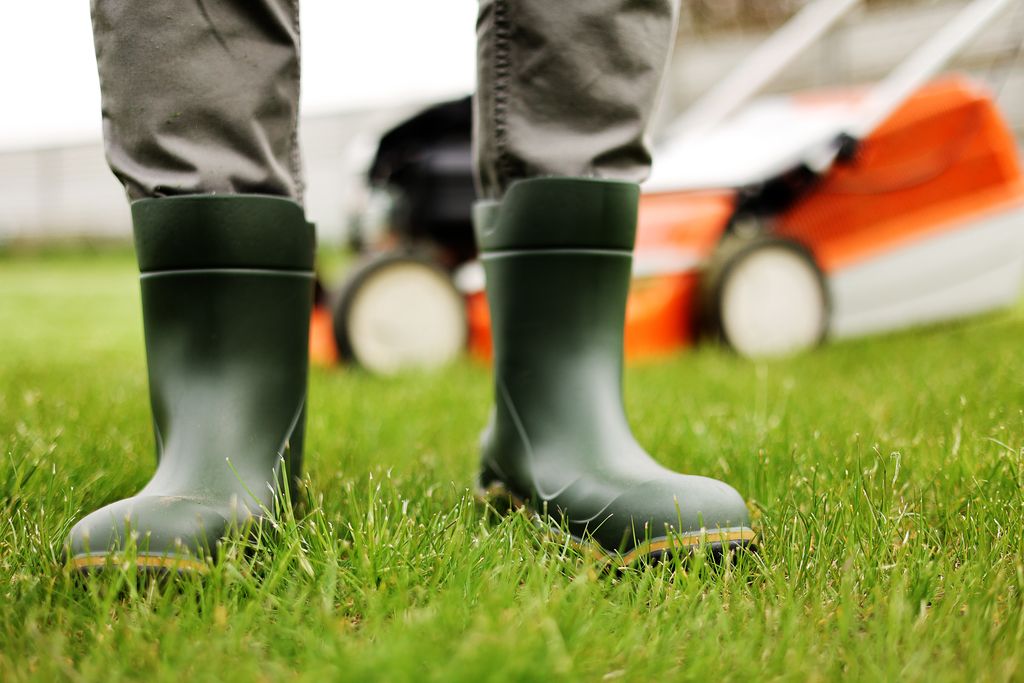
Mowing the lawn can feel like a mini workout, but doing it in the rain? That’s a whole different ball game. I’ve learned the hard way that mowing on slippery surfaces can pose serious safety concerns for homeowners like us. The last time I decided to tackle my overgrown grass during a drizzle, I quickly regretted it. The ground was slick, and before I knew it, I was doing an unintended dance with my mower, trying to keep my balance.
Safety Concerns While Mowing on Slippery Surfaces
When the grass is wet, it can become incredibly slippery, making it easy to lose your footing. Here are a few specific dangers to watch out for:
- Slipping: A simple misstep can lead you to take a tumble, which can result in sprains or even more serious injuries.
- Mower Control: Wet grass can cause your mower to slide, making it harder to steer and increase the risk of accidents.
- Electrical Hazards: If you’re using an electric mower, wet conditions can pose a risk of electrical shock.
Pro Tips: If you find yourself caught in the rain, it’s best to wait it out. If you must mow, take extra precautions. Wear shoes with good traction and keep your mower’s speed low.
Remember These Key Points
- Always check the weather: If rain is in the forecast, consider postponing your mowing.
- Wait for the grass to dry: Even a brief period of sunshine can make a big difference in traction.
- Invest in slip-resistant footwear: This simple change can help minimize the risk of slips on wet grass.
I know it can be tempting to just get the job done, but trust me, it’s better to play it safe and wait for a dry day. Your lawn will still be there tomorrow!
The Consequences of Improper Grass Cutting Techniques During Rain
When it rains and the grass gets wet, it can really change the way we cut our lawns. I’ve had my fair share of experiences where I thought I could just power through a rainy day to get the lawn mowed, but it’s not that simple. Wet grass is slippery, making it difficult for the mower to cut effectively.
How Wet Grass Affects Cutting Efficiency
When the grass is wet, it clumps together, creating a mess instead of a nice, clean cut. This can lead to uneven patches, which is something I’ve struggled with. I remember one time I tried to mow during a light drizzle. Not only did the mower clog up, but I ended up with ragged edges all over the yard. It was far from the neat look I was aiming for.
Blade Performance Issues
Wet grass can also affect the performance of the mower blades. If they’re dull or if you’re using the wrong technique, they’ll struggle to make clean cuts. A few years back, I decided to sharpen my blades after a rainy season, and it made a world of difference. Here’s a quick list of how wet grass impacts blade performance:
- Clogging: Wet grass can clog the mower deck, leading to overheating.
- Dullness: Dull blades don’t cut well, especially through wet grass.
- Uneven Cuts: When the blades can’t slice through properly, it leaves behind uneven patches.
Pro Tips: If you find yourself in a situation where the grass is wet, consider waiting until it dries a bit to mow. If you absolutely must mow, raise the mower height to minimize the mess. Trust me, your lawn will thank you for it!
Alternative Lawn Care Strategies When It’s Raining
When the skies open up and rain starts pouring, it can be tough to think of how you’ll keep your lawn looking pristine. I’ve been there, staring out the window while my grass grows just a little too wild. But fear not; there are several alternative lawn care strategies you can use to maintain your yard without mowing in the rain.
1. Focus on Fertilization
Rainy days are perfect for applying fertilizers. The moisture helps the nutrients seep into the soil, giving your grass a boost. Just make sure to choose a slow-release fertilizer to avoid runoff. I’ve noticed that my grass has thrived after a good rain-soaked fertilization session!
2. Weed Control
If it’s too wet for mowing, consider tackling those pesky weeds. A hand weeding session can be quite therapeutic, and wet soil makes it easier to pull them out by the roots. I often find that I can clear out weeds while the rain soaks my shoes—it’s like multitasking!
3. Aeration
If the rain isn’t too heavy, you could aerate your lawn. Aeration allows air, water, and nutrients to penetrate the soil more efficiently. The moisture helps, and you might find that your lawn responds well once the sun comes back out.
Pro Tips:
- Always check the weather; a light drizzle is fine, but avoid doing lawn care during heavy downpours.
- Invest in a good pair of waterproof boots to make tasks like weeding and aeration more comfortable.
4. Lawn Edging
While you might not be able to mow, edging is still fair game! Trimming the edges of your lawn can give your yard a neat appearance, and it’s easy to do even when the ground is damp.
Thinking creatively and embrace the rainy weather, you can keep your lawn in tip-top shape and even enjoy it more!
Summing It Up
In conclusion, while it might be tempting to mow your lawn in the rain to keep up with its growth, the risks are significant. From the dangers of slipping and injury to the long-term effects on grass health, soil compaction, and potential lawn diseases, the consequences can outweigh the benefits. By understanding these risks, you can make informed decisions that keep both you and your lawn safe and thriving.
Consider waiting for a dry day, as patience can save you from a patchy lawn and a damaged mower. Remember, there are alternative lawn care strategies to explore when the rain pours, such as fertilizing, controlling weeds, and edging.
So, the next time you see dark clouds overhead, think twice before heading out with your mower.
F.A.Q
Why is it bad to mow the lawn when it’s raining?
Mowing in the rain can harm your grass by tearing it rather than cutting it cleanly. This can lead to long-term damage, making your lawn unhealthy and allowing weeds to grow.
What are the risks of mowing wet grass?
Mowing wet grass can create clumps that smother the soil and inhibit airflow. It also increases the risk of slipping, making mowing unsafe for you and potentially damaging your mower.
How does mowing in the rain affect grass health?
When you mow in wet conditions, the grass blades can be ripped instead of cut, which weakens them. This stress can make your grass more susceptible to diseases and pests.
What are some good lawn care tips for mowing season?
Always wait for dry conditions before mowing. Aim to mow when the grass is dry, usually in the late morning or early afternoon. This helps keep your lawn healthy and thriving.
What should I do if I need to mow but it’s raining?
If it’s raining, it’s best to wait until the weather clears up. Plan your mowing around the forecast to ensure you’re cutting grass under ideal conditions, which promotes better lawn maintenance and overall grass health.

